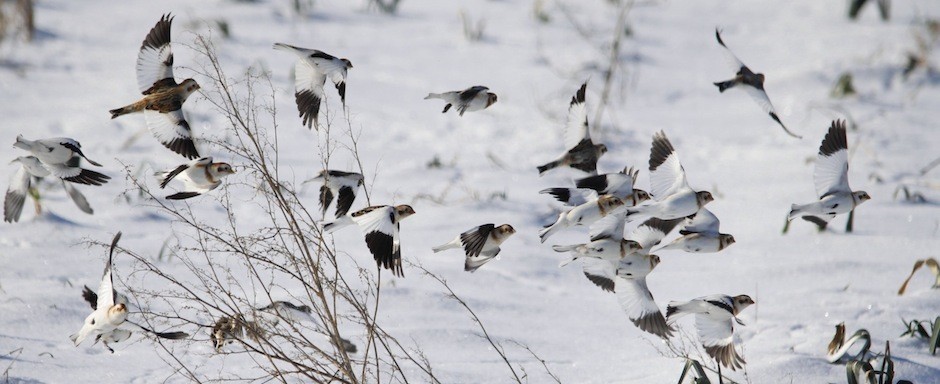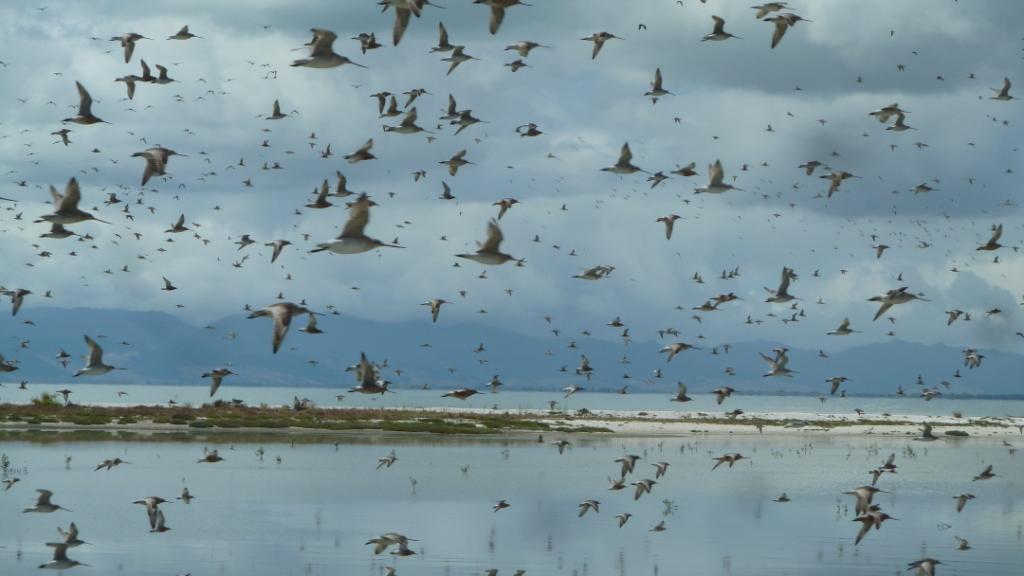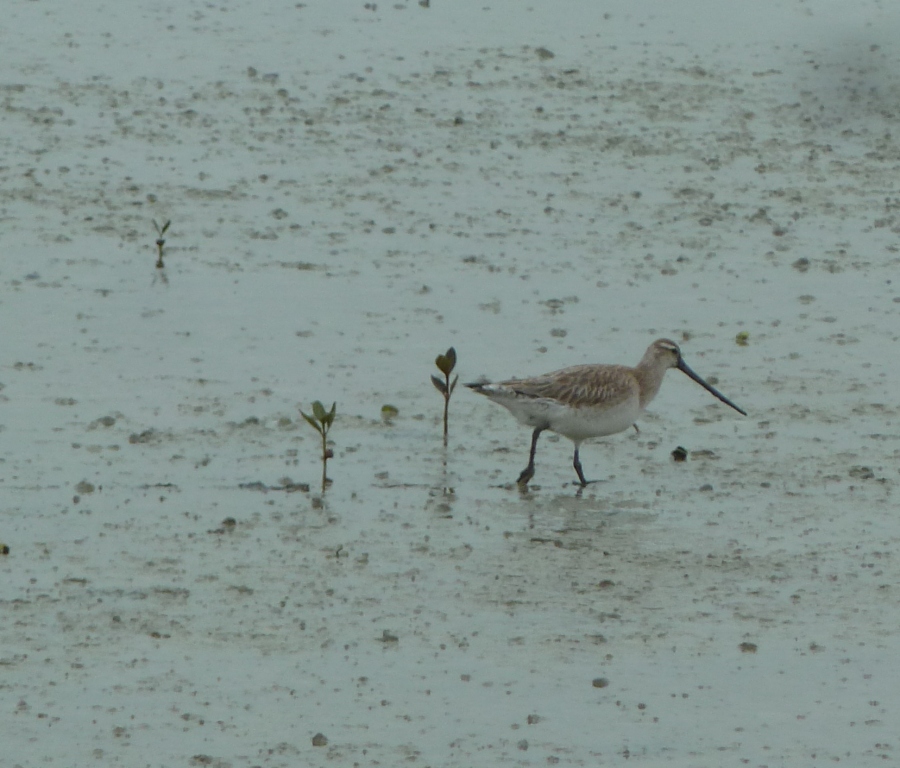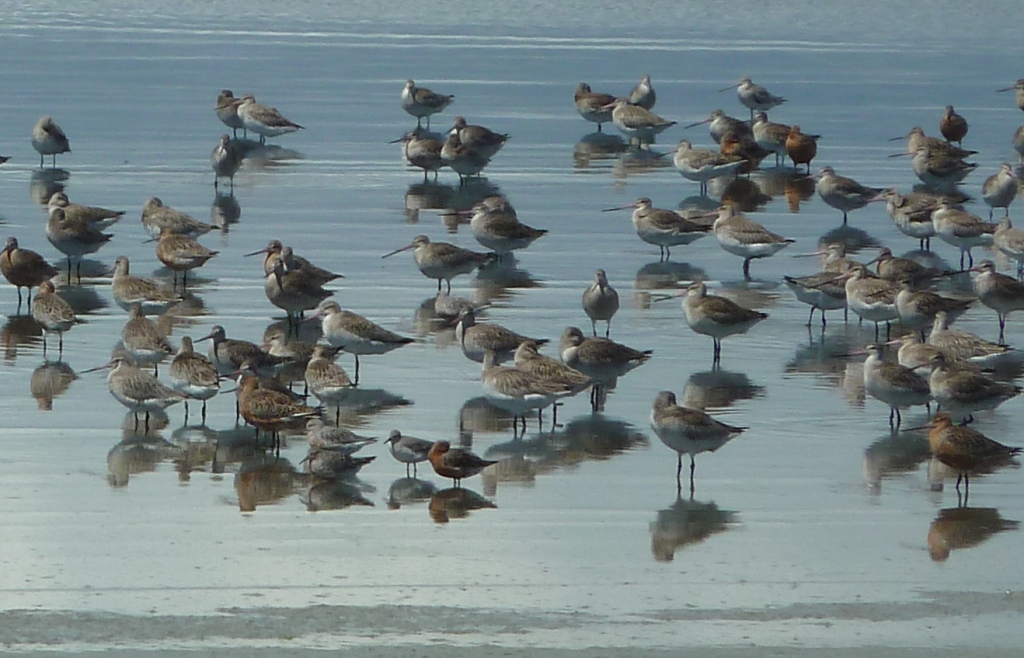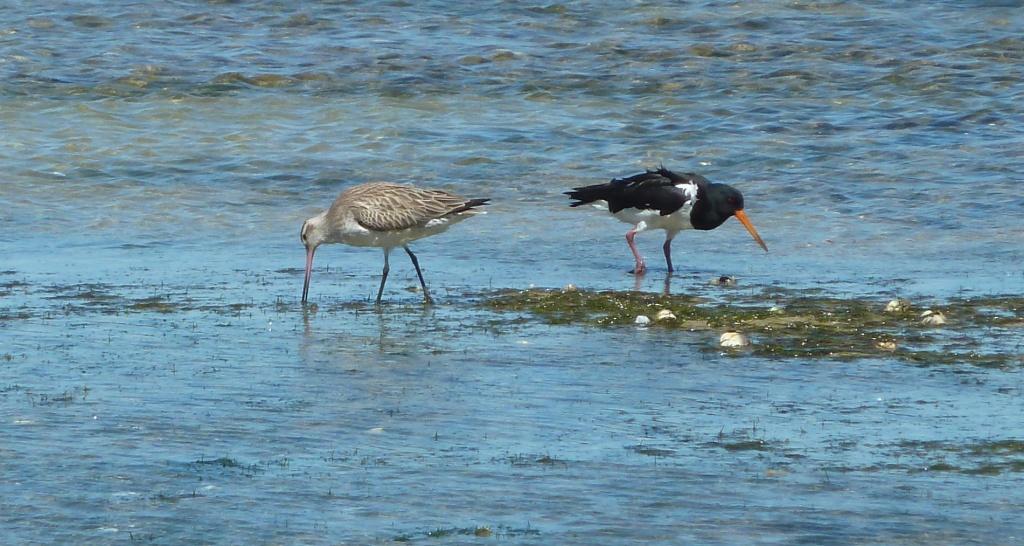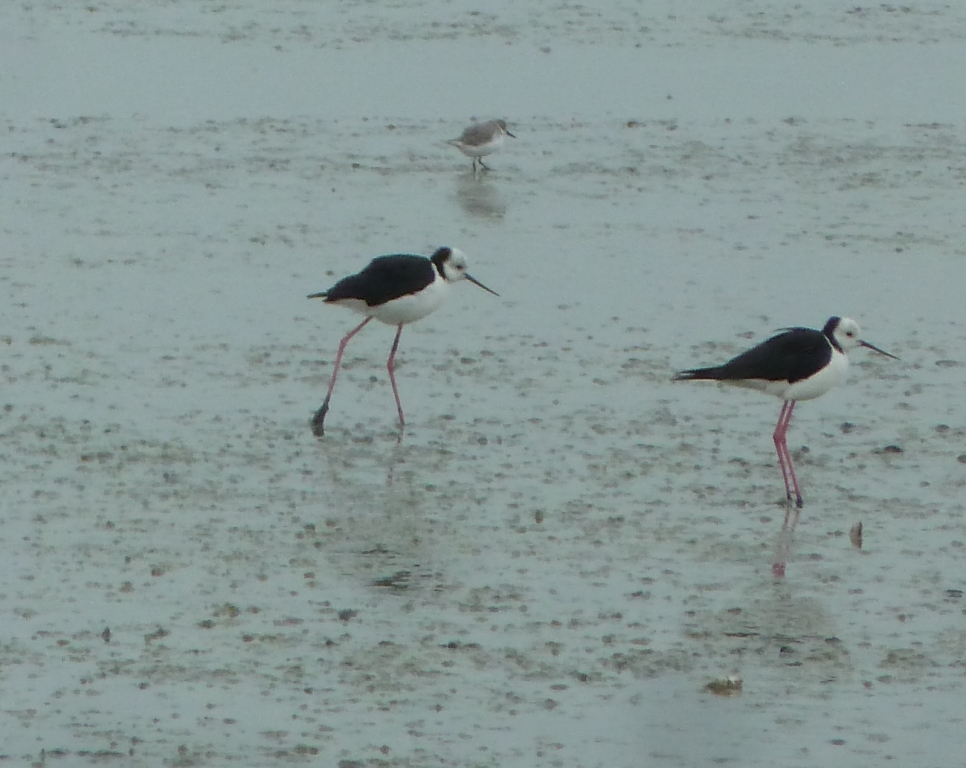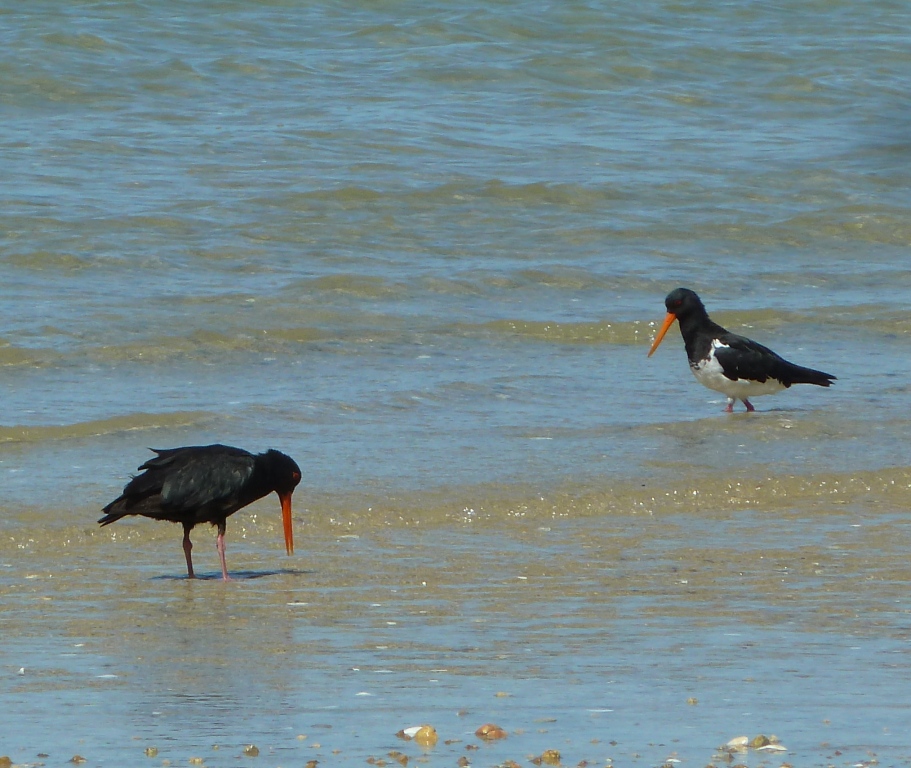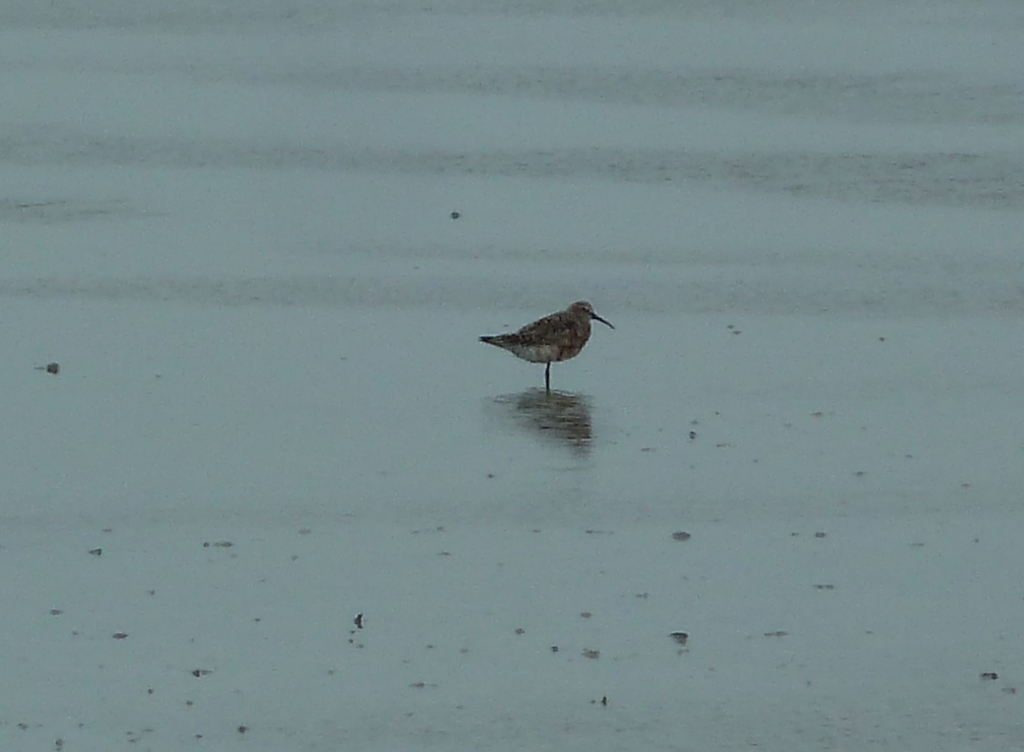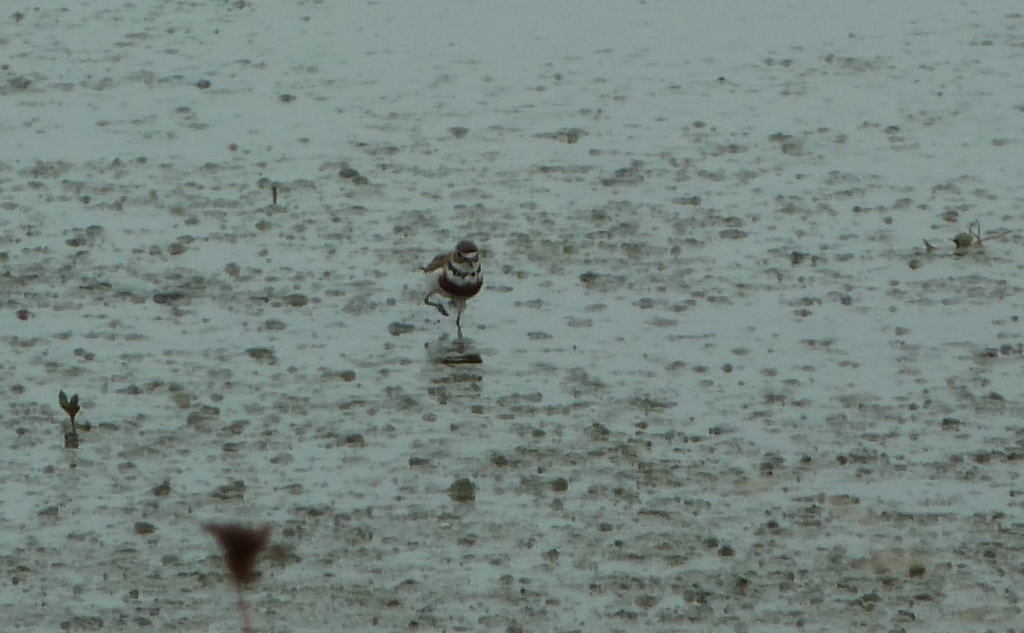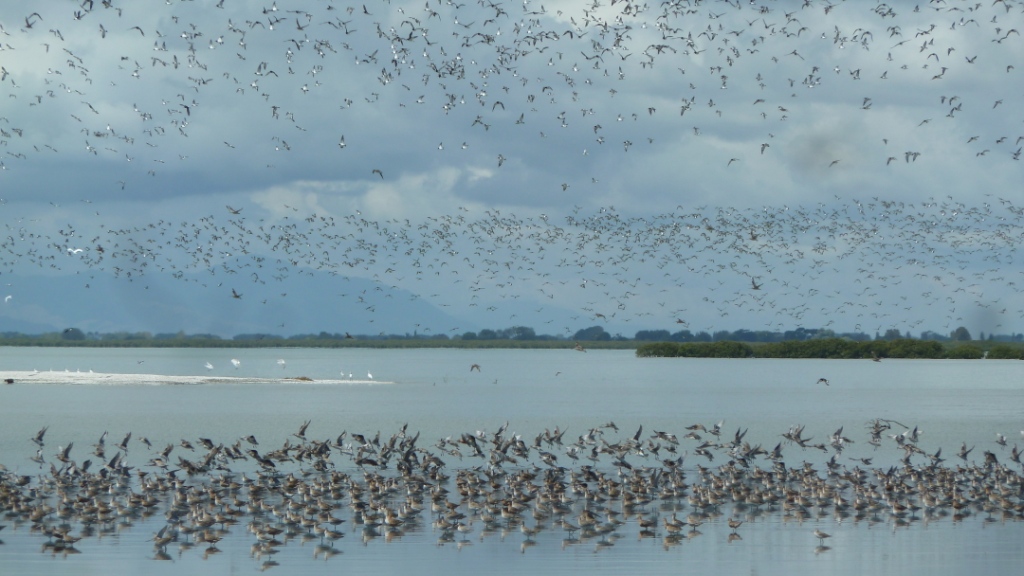
Thousands of shorebirds – at Pukorokuro Miranda shorebird area on the west side of the Firth of Thames (North Island). These birds are getting ready to head out for their breeding grounds thousands of kilometers to the north. (The big white birds/blobs in the background are Royal Spoonbills.)
In my youth…last week…I used to daydream about being a blue water sailor, taking my (dreamed of) sailboat to the far ends of the world’s oceans, exploring outposts in distant corners, braving the “Roaring Forties” as I rounded Cape Horn, following the route of the China tea clippers on their way to the Orient. Blue water refers to deep ocean that is found well offshore away from the influences of shallow water associated with land. On the jet bringing Marg and I back from our trip to New Zealand and Australia, I found myself again caught up in this reverie. Far below me the deep blue water was calling. To fuel my imagination we passed a couple of islands: a hundred shades of green bordered by the froth of pounding waves. Fifteen hours it would take to make the crossing to Vancouver.
But my other reverie was about Bar-tailed Godwits making a similar, but even longer, crossing. There is a considerable population of these large shorebirds that spends its Winter in New Zealand. However, they breed in the Arctic, spread across Siberia and Alaska. In 2007 a group of scientists implanted satellite tags in a dozen or so birds so they could uncover the route they took to the breeding ground. It appears that when the birds leave New Zealand toward the end of March/early April they fly, sometimes non-stop, 10,000 km to the huge intertidal area of the Yellow Sea. This is the largest intertidal area in the world and is estimated to encompass a million hectares of mud – a rich home to the food that shorebirds require to put on the fat necessary for moving on. After recuperating and recovering fat loads, the birds headed on another 5,000 km to their breeding grounds in Alaska.
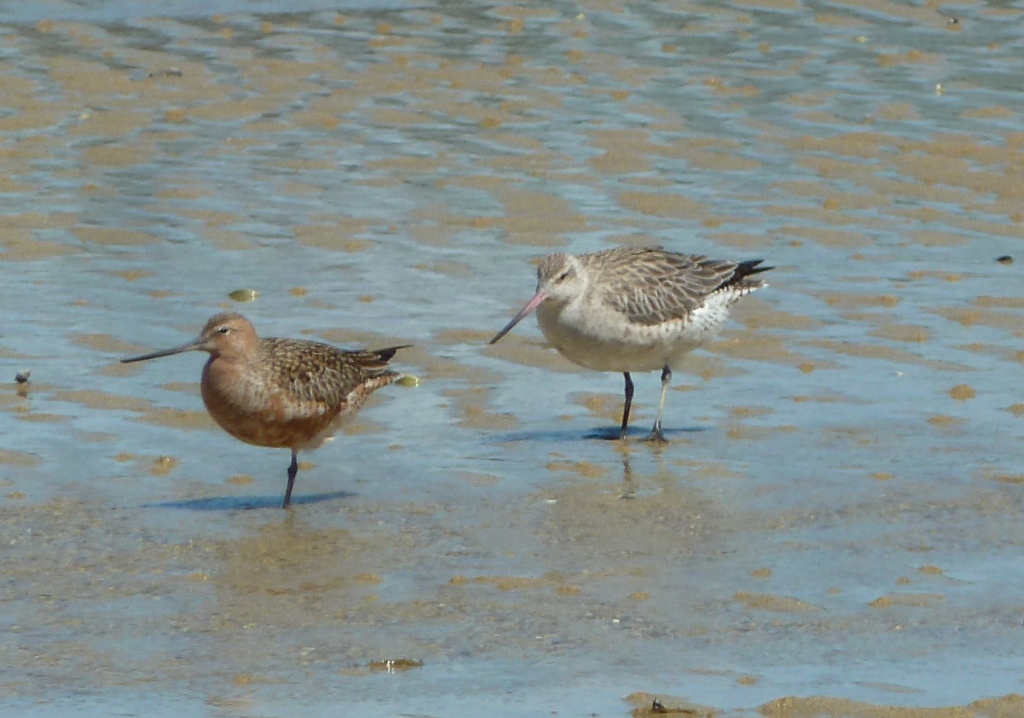
Probably male (left) and female Bar-tailed Godwits . The left-hand bird is molting into breeding plumage.
But the scientists got a bonus: the transmitters, which were expected to die during the summer, continued to transmit and they were able to follow the movement of a bird on its way south. After fattening in coastal areas of Alaska (essentially putting on so much fat that their weight doubled), the birds headed south. Flying at a height between 3 and 4 kilometers and at an average speed of 56 km/hour, the birds covered the 11,500 kilometers in 9 days – non-stop!! This more than doubled the distance that birds were known to cover in a non-stop flight. It is thought that the birds wait for following winds during the first part of the flight to assist with the enormous drag of the weight they have to carry. And, enroute, they sleep in a unique way: half of their brain remaining vigilant while the other half slumbers.
An estimated 70,000 birds winter in New Zealand. This number is down considerably from the 155,000 encountered in the mid-1990’s. It is thought that aggressive reclamation of Yellow Sea mudflats by China and Korea is the prime culprit.
One of the best places to watch these magnificent birds is at the Shorebird Centre of the Pukorokoro Miranda Shorebird Centre on the southwest side of the Firth Thames, just south of Aukland. [www.miranda-shorebird.org.nz] From blinds built next to the tidal mudflats you can watch thousands of shorebirds (including 5,000 godwits and 1,000 knots) quite close-up as they feed. When we were there we were treated to the huge flocks taking off and wheeling all about us over the flats.
From my seat 11,000 meters up, watching the blue water far below, I couldn’t help but be awed by the scope of this feat….by a bird that weighs around just 300 grams.
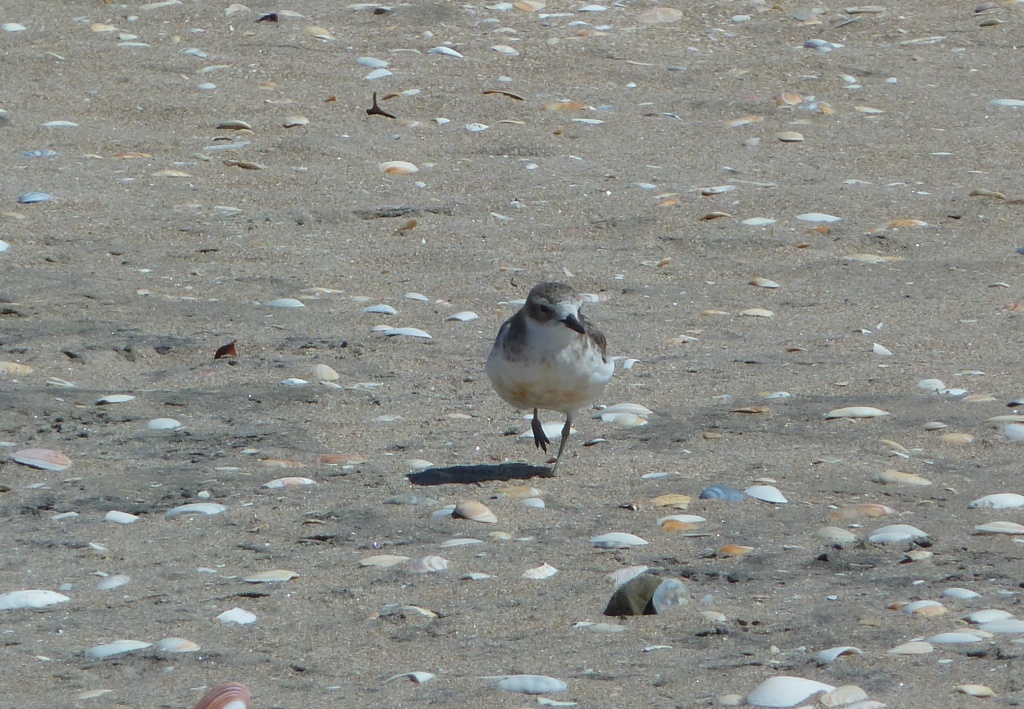
New Zealand Dotterel – a species in serious decline. Controlling Black-backed Gull populations in known Dotterel breeding areas has had a marked beneficial effect.
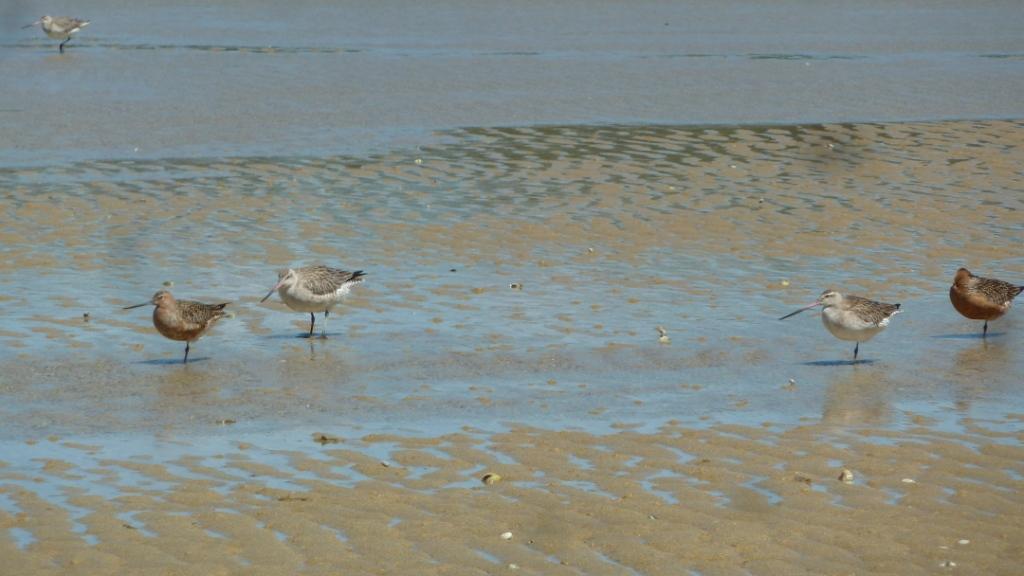
Bar-tailed Godwits. Note the well-rounded bellies (the “Rick Ludkin look”) indicating growing fat loads.
